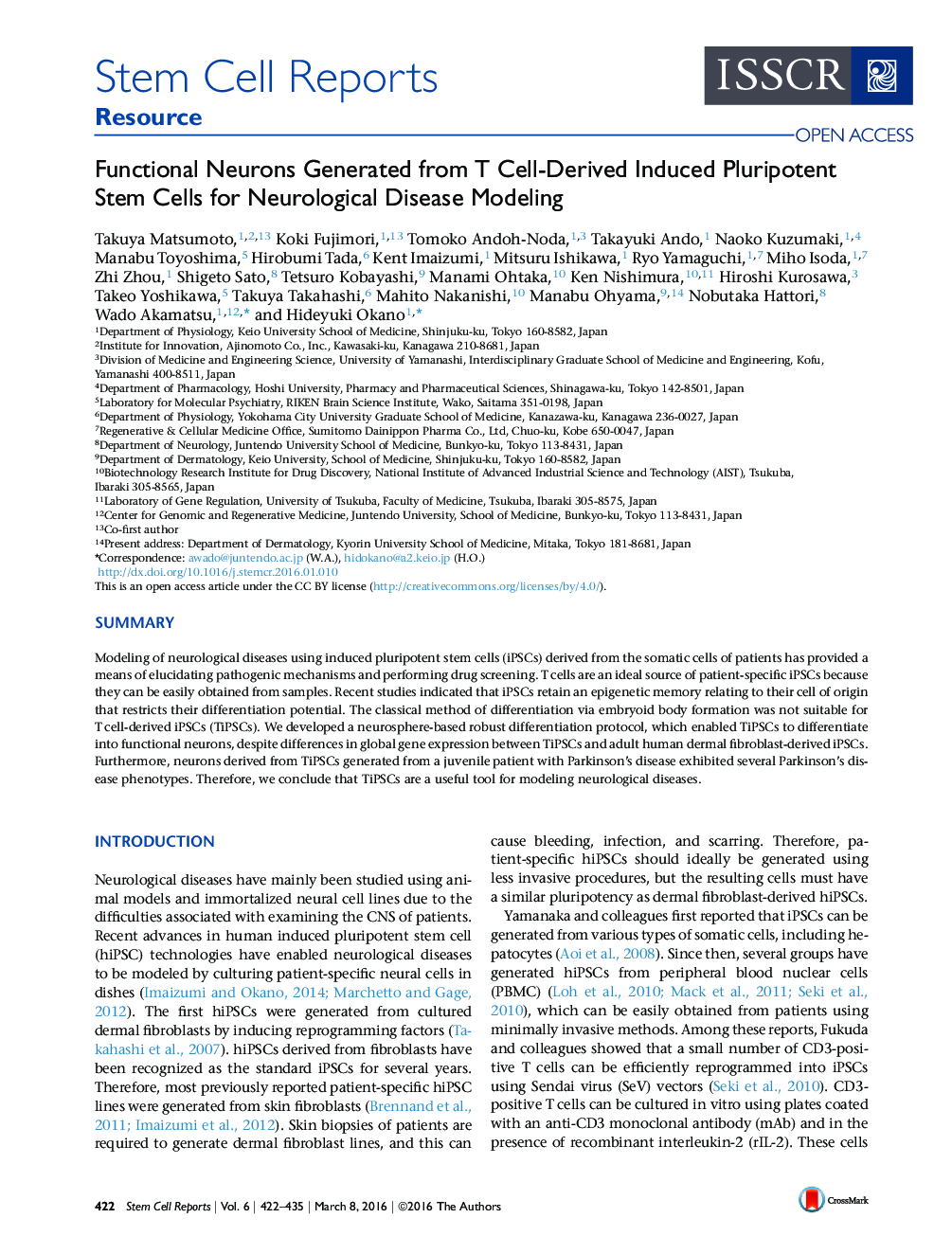| Article ID | Journal | Published Year | Pages | File Type |
|---|---|---|---|---|
| 2093315 | Stem Cell Reports | 2016 | 14 Pages |
•TiPSCs are a suitable source for neural disease modeling•Developing a robust neurosphere-based induction protocol•An optimized differentiation protocol can overcome clonal variations•Modeling Parkinson's disease using TiPSC-derived neurons
SummaryModeling of neurological diseases using induced pluripotent stem cells (iPSCs) derived from the somatic cells of patients has provided a means of elucidating pathogenic mechanisms and performing drug screening. T cells are an ideal source of patient-specific iPSCs because they can be easily obtained from samples. Recent studies indicated that iPSCs retain an epigenetic memory relating to their cell of origin that restricts their differentiation potential. The classical method of differentiation via embryoid body formation was not suitable for T cell-derived iPSCs (TiPSCs). We developed a neurosphere-based robust differentiation protocol, which enabled TiPSCs to differentiate into functional neurons, despite differences in global gene expression between TiPSCs and adult human dermal fibroblast-derived iPSCs. Furthermore, neurons derived from TiPSCs generated from a juvenile patient with Parkinson's disease exhibited several Parkinson's disease phenotypes. Therefore, we conclude that TiPSCs are a useful tool for modeling neurological diseases.
